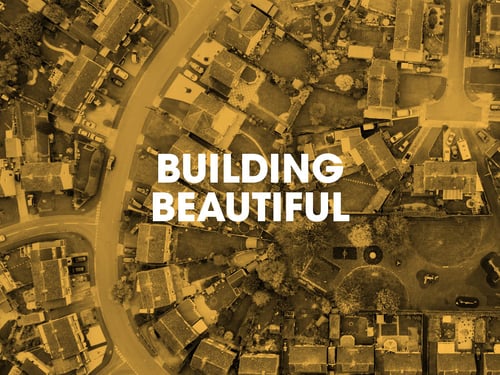The 10 key areas of the National Design Guide – in summary
According to the guide, well-designed places take into account site features and surrounding context, using baseline studies as a starting point for design. They integrate into their surroundings and are responsive to local history, culture and heritage. According to the Government, the National Design Guide “sets out a blueprint for how local authorities can achieve quality and great design, and recommends what developers need to deliver to help win the support of communities – ensuring new homes are built faster and better.”
Good design is set out in the guide under the following 10 characteristics:
- Identity comes from how buildings, streets and spaces, landscape and infrastructure combine and how people experience them. Good design gives these places and buildings a positive and coherent identity and contributes towards health and wellbeing, inclusion and cohesion. They have a character that suits the local history, how we live today and the future, and our visually attractive
- Built form, according to the guide, is “the three-dimensional pattern or arrangement of development blocks, streets, buildings and open spaces.” Well-designed places have compact forms that are walkable, benefit from good access to local public transport, services and amenities, creating easily navigable areas and boast memorable features to create a sense of place
- Movement of people is an important consideration of good design. There should be a “clear pattern of streets” that are safe and accessible, functional efficiently for a range of users, prioritise other means of getting around over the car, promote activity and social interaction and incorporate “green infrastructure”
- Nature contributes to the quality of a place and quality of life, and it is a critical component of well-designed places, according to the guide. Existing nature should be carefully integrated, diverse ecosystems should be prioritised so they can flourish, and any development should provide open spaces that are easy to access and enjoy by all
- Public spaces should be open to all and allow for access and movement. Well-designed places should provide public spaces that support a wide variety of activities and encourage social interaction and activity, range from large to small spaces, be safe, secure and attractive, and features trees and other planting to provide shade and cover
- Uses can be a mixture of purposes that support everyday activities, including to live, work and play. The guide states that well-designed places have “a mix of uses including local services and facilities to support daily life, a mix of housing tenures and types to suit people at all stages of life, and well-integrated housing and other facilities designed to be tenure neutral and socially inclusive
- Homes and buildings are functional, accessible and sustainable. They should provide good quality internal and external environments, promoting health and wellbeing, and relate well to private, shared and public spaces around them. They should “resolve the details of operation and servicing” so that they are unobtrusive in the neighbourhood
- Resources should be conserved including land, water, energy and materials. Buildings should reduce their resource requirements, be adaptable and reduce waste, and use materials and adopt technologies that minimise the impact on the environment
- Lifespan – places should sustain their beauty over long periods. They should be designed and planned for long-term stewardship by stakeholders, be easy to look after, adapt to changing needs and evolving technologies, and by well-managed and maintained by their users, owners and agencies
National Model Design Code
Based on this guide, the outcome of a design code consultation in early 2020 and the findings of the Building Better, Building Beautiful Commission (due December 2019), a National Model Design Code will be published setting out detailed standards for key elements of successful design.
The code is expected to set a baseline for local planning authorities to take into account when determining planning applications. The Government expects local authorities to develop their own codes, based on the national model, to suit local needs and environments.


Have your say